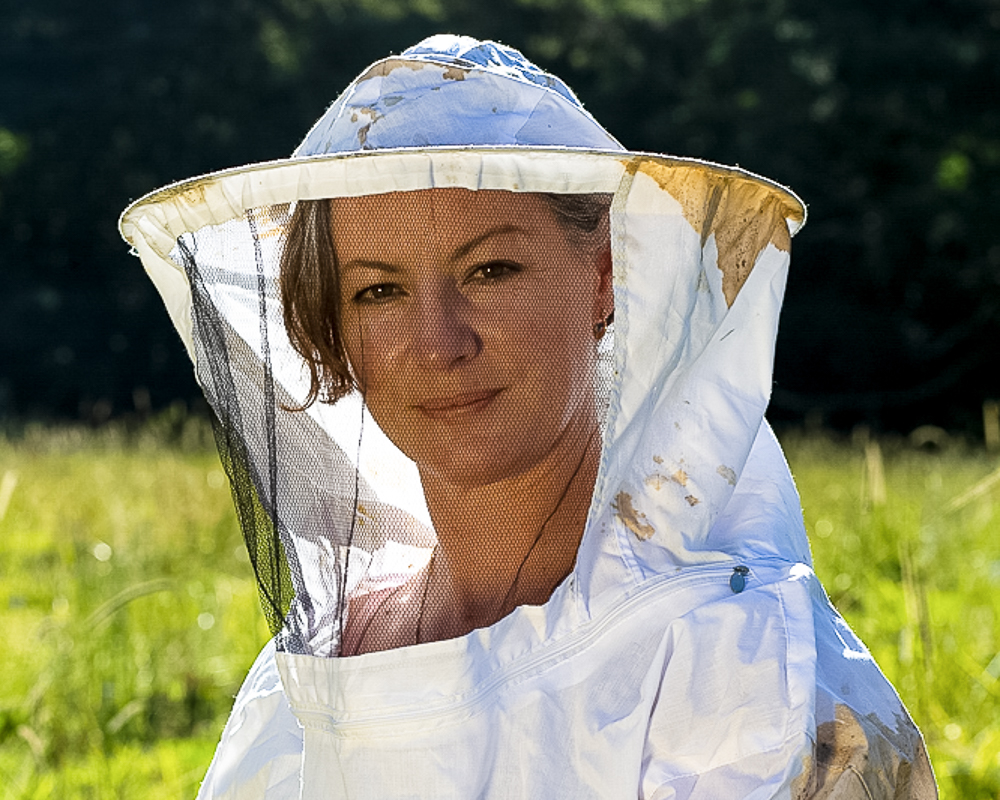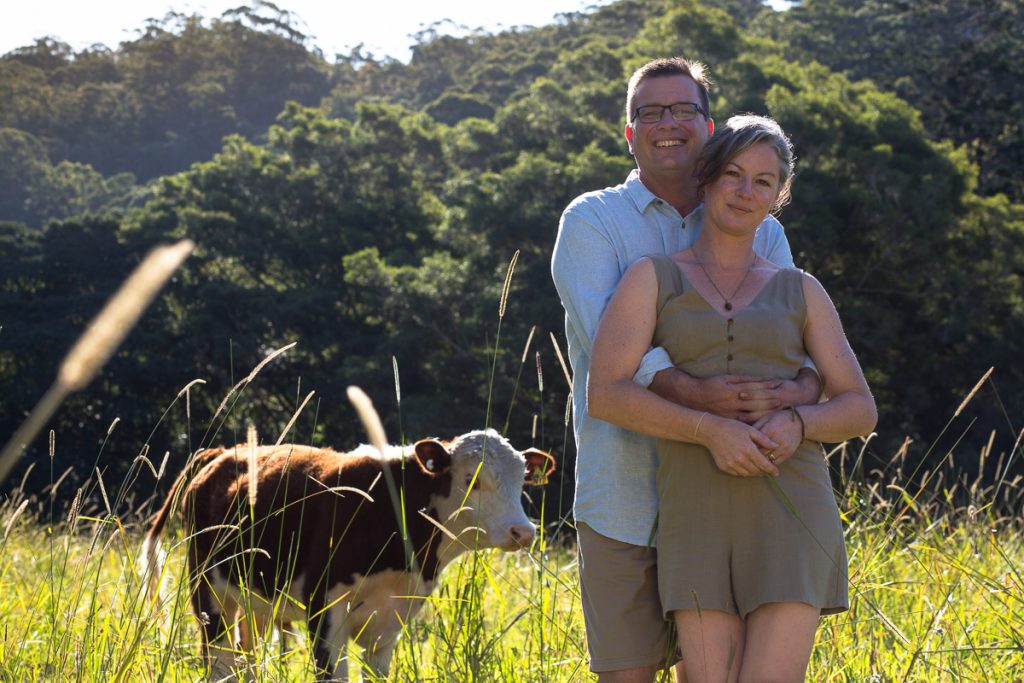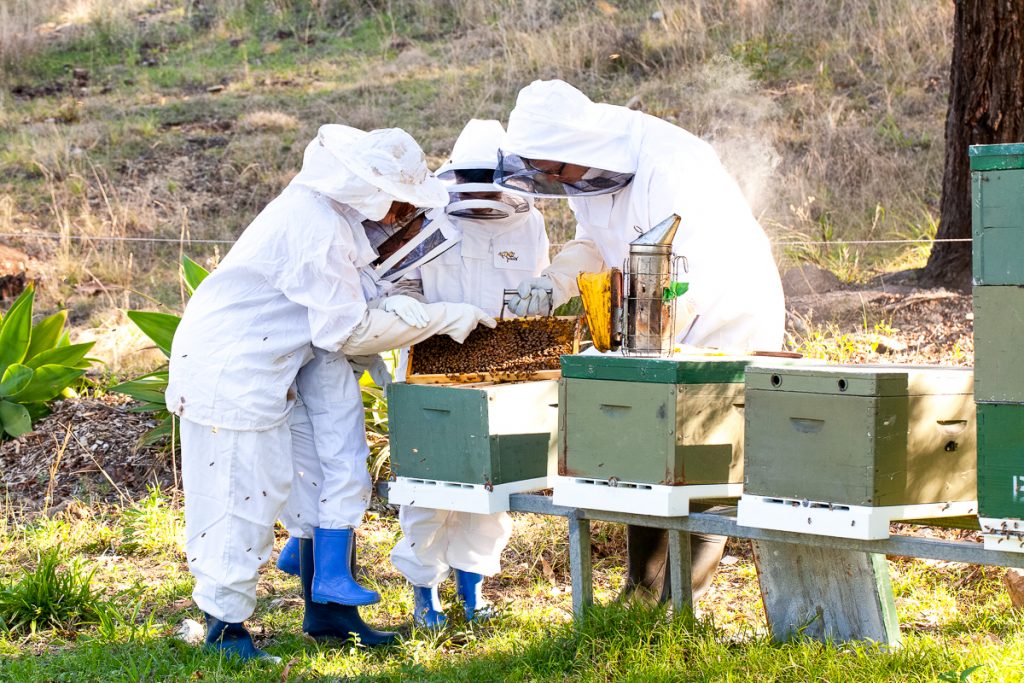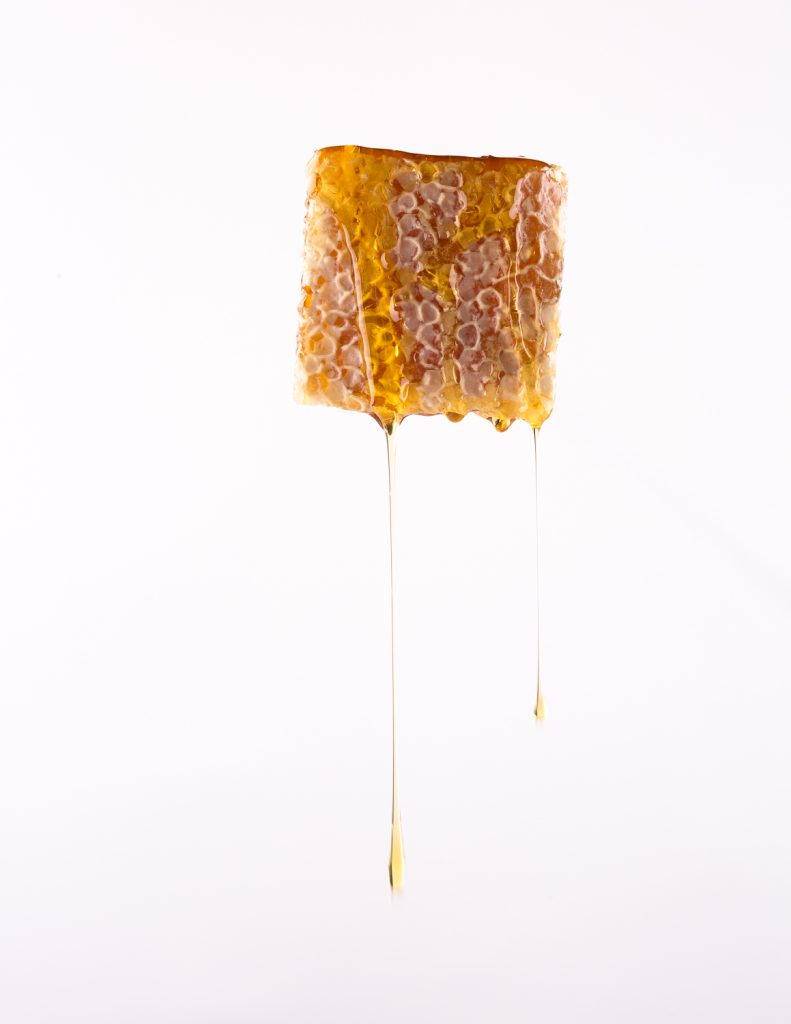
No, I am not planning an adventure into space. I’m about to get up close and personal with beehives at Sheer Falls, an artisan beekeeping company nestled into the base of the Blackwall Range and backing onto the vast Uralba Nature Reserve in northern NSW. (And just to clarify my trepidation about the bees, I am highly allergic and carry an epi-pen at all times.)
The name Sheer Falls is just what it feels like. From where I am standing, huge rock faces shoot up into the sky, covered in lush, green foliage.

When I arrive, I meet Rob and Rebecca Blair-Hickman, a young couple who after 8 years in Perth moved to Pimlico to be closer to Rebecca’s family. They run Ballina Honey, a clean, green and ethical apiary and apply an artisan approach to their honey production.
“Our generation’s growing curiosity in sustainability and self-sufficiency has put a buzz back into beekeeping,” says Rob, a third-generation beekeeper.
Beekeeping is a hands-on endeavor and hard to learn from books, Rob says. He learned from his grandfather, a beekeeper in Inverell and his father, who was a Master beekeeper in Nepean, Sydney. His take on modern beekeeping is to use the bees to their full capacity. Not only do the bees pollinate the couple’s own orchard and vegetable garden, Rob sometimes loads them up in a truck to take them to several local chemical-free orchards in the Corndale area. “One especially “Tullamoor” is run by an ex-beekeeper, who grows macadamia and coffee, we are really happy with his ethos and love partnering with him and his family,” says Rebecca. “Different types of flowers have different amounts of proteins and we look to vary the diet to keep bees healthy. It’s not good to mono-crop them, a variety of flowers keep our bees in good shape” Rob explains.
Location is very important for bees and a responsible beekeeper needs to keep his or her hives away from areas where insecticides and herbicides are being used. That’s why Sheer Falls’ location bordering on the Uralba nature reserve is perfect to keep their bee colony in good shape.

Also important for bee health is to help to keep the nucleus colonies alive over winter, a job that is easier done in the sub-tropical climate of northern New South Wales than in Victoria.
“Winter in the Northern Rivers is not a true winter although production definitely drops, we don’t close the hives down. We simply reduce the volume we harvest, making sure we leave the bees enough food in case of inclement weather” Rebecca explains.
The honey market is strong at the moment, with increased demand among health- and eco-conscious consumers. As a result, prices for Australian honey remain high.
As the Blair-Hickmans’ business is also about zero waste, they use all the by-products from making honey to make candles, lip balm, and jubes. The wax is also sold in bulk to other local artisan businesses, such as those making beeswax wraps (another great zero waste product).
“This special honey of ours is made by hand, in small batches and is full of the live components natural honey raw honey contains,” Rebecca says. One of the couple’s best selling honey product is a creamed honey, sought after by many of their friends. Rebecca tried various ways to create this product and finally succeeded. She keeps the secret recipe to herself but lets me in on the fact it is based on a similar procedure as yeast is to a sourdough.
After harvesting, the honey is cold-gravity filtered through several layers of light organic fabric. And no chemicals are used to clean the equipment. High temperatures need to be avoided to keep the honey’s natural nutrients intact.
“All natural raw honey does contain prebiotics, which helps to feed the good bacteria in our gut,” says Rebecca. Prebiotics has components which encourage the growth of the good bacteria in our guts.

As a cottage industry, she finds it very important to include her two young boys in the production. Her youngest son loves pouring the liquid wax into the lip balm tubes, while the eldest is already interested in the bees’ pollination site. “This year both our sons will start their first hive. We want them to develop an understanding of how the insects operate and see the architectural structure of a beehive with their own eyes” says Rebecca. A hive is one of the most outstanding nest building structures in the insect world.
Rob uses a bee smoker as he approaches the beehives. A few puffs of smoke will calm the bees and enable the beekeeper to open the hive. Looking at Rob and his eldest son slowly lifting a honeycomb filled with honey, I smell warm, earthy, forest floor scents coming from the hive.
With loud bees buzzing around my head, I suddenly feel very safe in my apiarist suit.